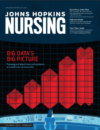Preliminary findings: 80 percent of elder participants see daily life, health improved
An 80 percent success rate at anything is great. Helping 80 percent of elder residents stay safely, independently in their own homes longer, with a potentially tremendous cost savings to the U.S. healthcare systems, is an astonishing accomplishment.
According to preliminary findings, that’s just what Community Aging in Place, Advancing Better Living for Elders is capable of. “We find thatworking with older adults on their own goals while making small changes to the home environment is powerful medicine,” says Sarah L. Szanton, PhD, ANP, who launched the program (called CAPABLE) in Baltimore, MD and has since seen it piloted in Michigan among lower-income older adults on Medicaid and Medicare.
Older adults who have difficulty with such daily activities as bathing, cooking, or just getting to the bathroom often end up in hospitals or nursing homes, spending a disproportionately huge number of healthcare dollars, according to a report conducted for the U.S. Department of Health & Human Services. The CAPABLE intervention involves home visits with an occupational therapist, a registered nurse, and a handyman to work together with older adults to identify mobility and self-care issues (a missing handrail, no system for remembering to take medicines, etc.) and fix or modify them. Szanton’s study is called “Preliminary Data from Community Aging in Place, Advancing Better Living for Elders, a Patient-Directed, Team-Based Intervention to Improve Physical Function and Decrease Nursing Home Utilization: The First 100 Individuals to Complete a Centers for Medicare and Medicaid Services Innovation Project.” In it, the team made 10 visits of 60 to 90 minutes to each home over a five-month period.
Of 100 low-income older adults who participated:
- 79 percent improved their self-care over the course of five months.
- The average participant improved by cutting disability in half (i.e., the number of self-care tasks that are difficult for the participant were halved).
- Participants experienced a decrease in depressive symptoms similar to that of taking an anti-depressant medicine.
Publication: the Journal of the American Geriatrics Society.
